A Brief History of Cosmological Ideas
Aristotle
The Greek philospher Aristotle proposed that the heavens were literally composed of 55 concentric, crystalline spheres to which the celestial objects were attached and which rotated at different velocities (but the angular velocity was constant for a given sphere), with the Earth at the center.
Mathematician and astronomer, Aristarchus of Samos born in 310BC put forward the idea of universe in which the planets travelled around the Sun. However it would be some 1800 years before the idea was put forward again by Copernicus in 1543.
The Ptolemaic System
The prevailing theory in Europe as Copernicus was writing was that created by Ptolemy in his Almagest, dating from about 150 A.D. The Ptolemaic system drew on many previous theories that viewed Earth as a stationary center of the universe. Stars were embedded in a large outer sphere which rotated relatively rapidly, while the planets inhabited smaller spheres as . The idea that the Earth was at the centre of the universe with everything revolving around it was one that fitted with religious beleifs. Afterall, man is the most important of God's creations and so it was proper that the Earth should be at the center of a perfect and uniform universe.
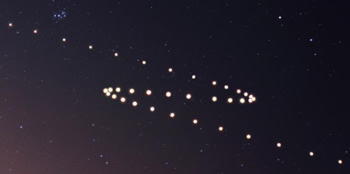
The Ptolemaic model of the universe, had the Earth at the center of the universe with the Sun and the planets travelling around in circular orbits. To accurately describe the observed data, the planets travelled in smaller orbits known as epicycles as they orbited around the Earth. This reproduced the motion of the planets as the travelled across the sky. In particular, the phenomena of retrograde motion, in which the planet sometimes appears to travel backwards or loop the loop. The illustration shows the orbit of Mars over a period of several month.
Nicolaus Copernicus (1473-1543)
In 1543, Copernicus formulated another model of the universe in which the Earth went around the Sun, the Heliocentric Model of the Universe. The publication of his book, De revolutionibus orbium coelestium (On the Revolutions of the Celestial Spheres) is often taken to be the beginning of the Scientific Revolution.
The orbit of the planets was still circular but in his model the problem of retrograde motion was incoporated naturally, as shown in Figure 1. The orbit of the Earth and Mars is shown. Since Mars is further from the Sun it takes longer to travel in its orbit than the Earth. Therefore, there will be ocassions when the Earth overtakes Mars in its orbit. The line of sight is shown from the Earth to Mar is shown at different intervals. As viewed from the Earth, does Mars appears to go backward in its orbit as the Earth overtakes Mars but it is no more unusual than seeing a cyclist go backwards past your side window when you are in a car travelling in the same direction at a greater speed.
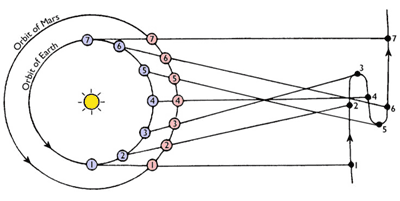
Tycho Brahe (1546-1601)
Tycho Brahe observed the planets and made accurate observation of the stars.
Johannes Kepler (1571-1630)
Originally, Kepler had planned to be ordained as a Lutheran minister. He saw it as his Christian duty to understand the universe in terms of mathematical rules and thus understand the works of God. He first attempt at explaining the cosmos was in the work, Mysterium Cosmographicum (Mystery of the Sacred Cosmos). He devised a model of the solar system in which the orbits of the planets fitted inside spheres with radii that could accomodate each of the Platonic solids. This idea is wrong.
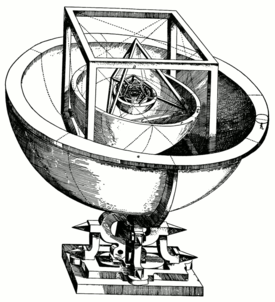
In 1601 he was hired as Tycho Brahe's assistant. As a mathematician it was his job to make sense of Brahe's extremely accurate observational data for the orbit for Mars. Kepler described the effort as his "War with Mars" but it resulted in the three laws that bare his name.
Keplers First Law - the planets do not move in circles but rather in elliptic orbit, with the Sun at one focus.
Keplers Second Law - the radius vector sweeps equal areas in equal times
Keplers Third Law - the time for the period square is proportional to the cube of their average distance from the Sun cubed. T2 ∝ R3
Galileo Galilei (1564-1642)

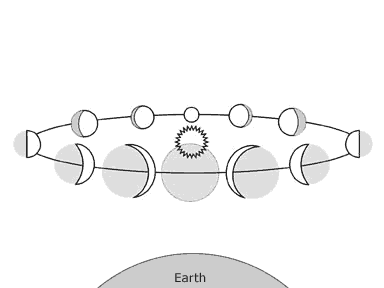
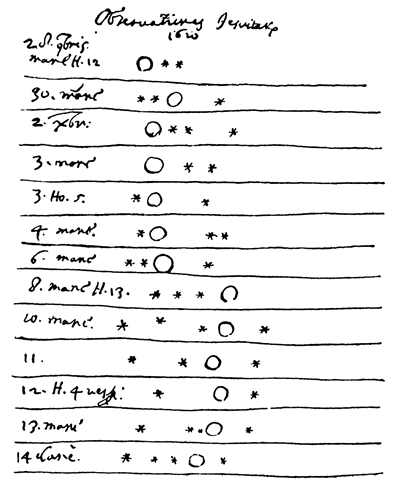
Galileo supported the Copernican model of the universe and had used the newly invented telescope to discover evidence to support his belief. The telescope allowed Galileo to see that there were mountains on the moon, which went against the accepted religous view that the universe was perfect. Galileo also discovered spots on the Sun. People really tried hard to account for these observations without making the heavens imperfect; one suggestion was that over the mountains of the Moon there was a layer of clear crystal so the final surface would be smooth and perfect!
One observation definitely disproved the Ptolemaic model, although it didn't prove that Copernicus was right (as Tycho Brahe pointed out). This was the observation that Venus has phases, much like our Moon does. To the naked eye, Venus always appears as a bright dot in the sky. With a telescope, however, it is fairly easy to see the phases of Venus. Just as the Moon has phases, Venus too has phases based on the planet’s position relative to us and the Sun. There was no way for the Ptolemaic model (Earth centered solar system) to account for these phases. They can only occur as Galileo saw them if Venus is circling the Sun, not the Earth.
Galileo saw near Jupiter what he first thought to be stars. When he realized that the stars were actually going around Jupiter, it negated a major argument of the Ptolemaic model. Not only did this mean that the Earth could not be the only center of motion, but also it knocked a hole in another argument. The supporters of the Ptolemaic model argued that if the Earth were moving through space, the Moon would be left behind. Galileo’s observations showed that the moons of Jupiter were not being left behind as Jupiter moved.
Galileo's advocasy of the heliocentric model of the universe brought him into conflict with the Church. In 1616, the theologians of the Holy Office decleared Copernicanism, 'false and erronious' and the Pope admonished Galileo for not defending its doctrines.
Galileo was asked to published a book which was supposed to support the Geocentric view, however when Dialogo Sopra I Due Massimi Sistemi Del Mondo (Dialogues on the Two Chief Systems of the World) was published, it was an outright argument for Copernican view. The book was an imaginary conversation between three people. The Geocentric position was argued for by a doggmatic, arogant character named Simplicio. The Copernican view was supported by intelligent and wise character named, Salvanti, representing Galileo. A neutral character who was receptive to either position was also written.
The Church banned the book and ordered for Galileo to appear before the Inquisition for herecy. Threatened with torture, Galileo confessed that he was wrong. By this time, Galileo was an old man of 68 years. A death sentence would certainly not have been an unusual punishment for herecy, however Galileo was lucky and was sentenced to life imprisonment, which was latter commuted to being held under house arrest at his home outside Florence. He died in 1642.
Some 359 years after Galileo death, the Vatican cleared Galileo of any wrongdoing. Pope John Paul II said,
Thanks to his intuition as a brilliant physicist and by relying on different arguments, Galileo, who practically invented the experimental method, understood why only the sun could function as the centre of the world, as it was then known, that is to say, as a planetary system. The error of the theologians of the time, when they maintained the centrality of the Earth, was to think that our understanding of the physical world's structure was, in some way, imposed by the literal sense of Sacred Scripture
Which of course it isn't.
Isaac Newton (1642-1727)
It was Sir Isaac Newton who was able to show that Kepler's laws of planetary motion are a natural consequence of simpler and more general descriptions of motion in nature. This brought into one theory both our observations of how things move on Earth and how the planets move in the heavens. These motions are described formally as Newton's laws of motion and gravity.
Newton applied this idea to the Sun and planets and took Keplers laws and calculated that the force falls off with the square of the distance from the Sun.
Newton's law of universal gravitation states that there is a force acting between objects that pulls them together. This force is proportional to the mass of the objects and inversely proportional to the square of their distance apart.
F = (GMmr^)/r2
Newton looked at the motion of the moon around the Sun and reasoned that the force responsible for gravity on Earth might be responsible for keeping the moon in orbit around the Earth. It turned out to be so
